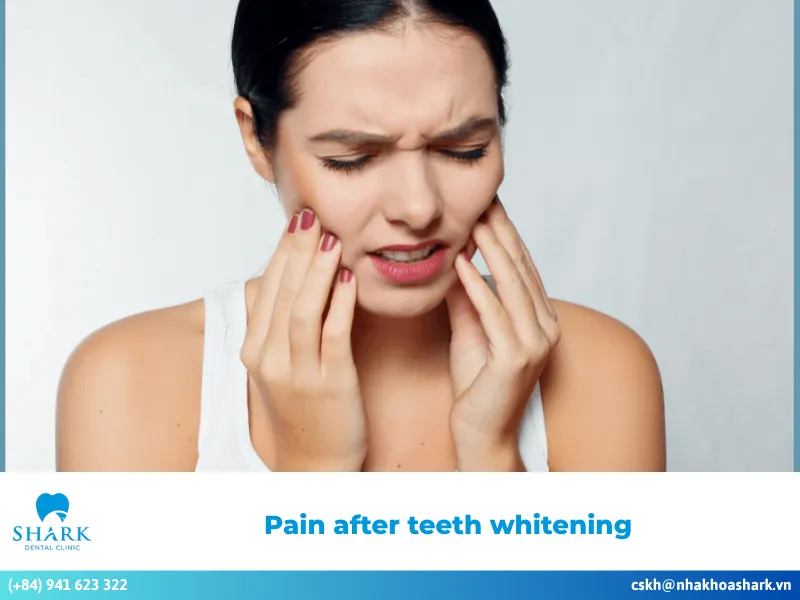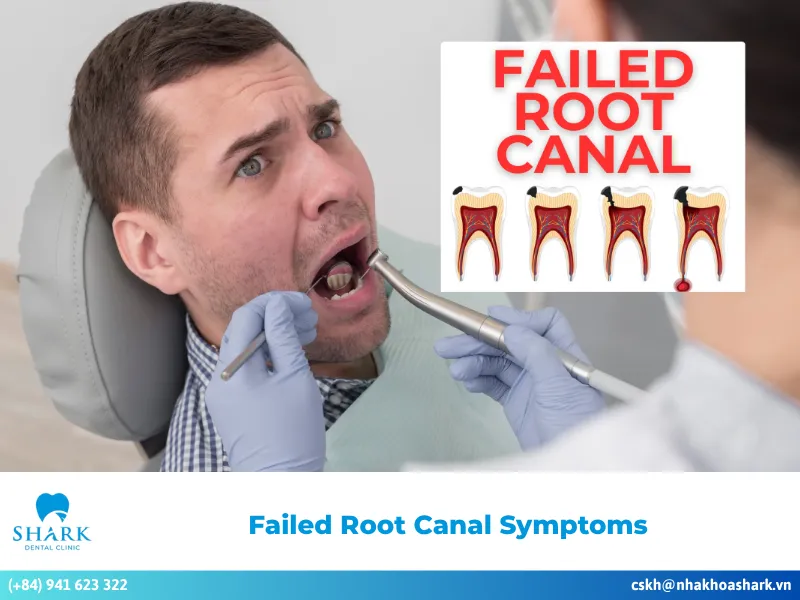Metal braces are an orthodontic method chosen by many customers due to their high effectiveness, fast results, and very affordable cost. So what are traditional metal braces? How much do metal braces cost? Refer to the information in the article below!
What are metal braces?
Metal braces are a traditional orthodontic method. Reflecting on the history of braces, dentists use orthodontic tools such as archwires and brackets to apply fixed pressure, helping the teeth gradually shift into proper alignment.
Traditional metal braces are highly regarded for their orthodontic effectiveness. By applying continuous force, they gradually correct issues such as overbite, underbite, misalignment, and gaps. These dental problems can typically be resolved within 18 to 24 months, after which the teeth align properly, resulting in a naturally balanced smile.
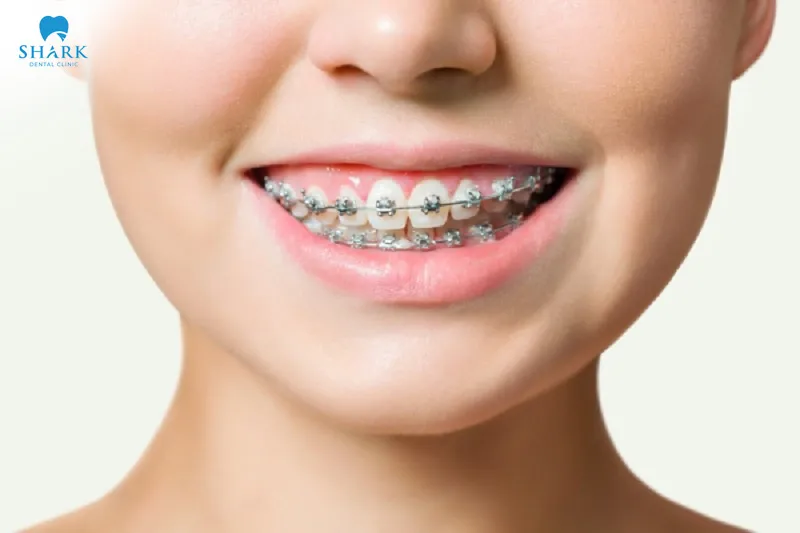
Who should get metal braces?
Traditional metal braces can be used for all cases that require orthodontic treatment, such as:
- Individuals with misaligned or uneven teeth structure.
- Individuals who wish to align their teeth for a naturally straight and beautiful smile.
- Individuals with protruding teeth, underbites, or crooked tooth alignment.
- Individuals with spaced or gapped teeth and misaligned bites between the upper and lower jaws when chewing.
- Individuals with dental structures affected by underbite or deep bite who require orthodontic intervention.
- Individuals seeking highly effective orthodontic treatment at an affordable cost.
>>> See more: How old do you have to be to get braces?
Metal braces: Pros and Cons
According to experts, traditional metal braces are a popular choice due to their numerous advantages. However, they also come with certain limitations.
Pros to metal braces
Metal braces are a widely chosen orthodontic method thanks to their distinct advantages in both treatment effectiveness and fast-acting results, such as:
- High orthodontic effectiveness: Metal braces have a specialized structure. The combination of archwires, brackets, and elastic bands helps fix the teeth in place, allowing them to move quickly and effectively. With metal braces, noticeable results in tooth alignment can be seen after a relatively short period of time.
- Corrects various dental issues: Metal braces can address a wide range of dental problems, from mild to severe cases such as spaced teeth, crooked alignment, overbite, underbite, and uneven bite between the upper and lower jaws. Just one orthodontic treatment with metal braces can significantly improve alignment and bring out naturally straight, well-balanced teeth.
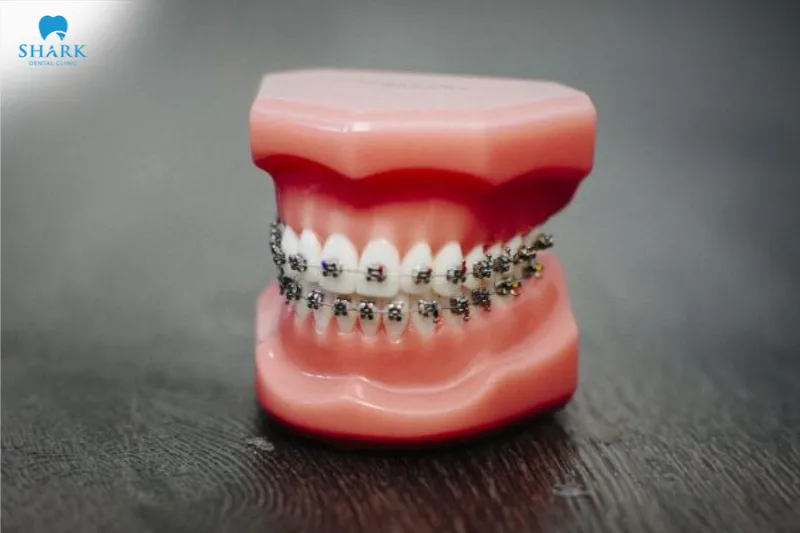
- Improved bite alignment and chewing function: Traditional metal braces also help correct bite issues such as underbite and deep bite. By shifting the teeth into proper alignment, they enhance chewing efficiency and contribute positively to the digestive system.
- Cost-effective: Compared to other orthodontic methods on the market, traditional metal braces are much more affordable, making them suitable for a wide range of patients.
- Simple and straightforward procedure: Metal braces are quickly applied by dentists through a simple process. If you are wondering how long does it take to get braces on, the answer is that the installation can be completed within a short period, and the progress of tooth movement can then be monitored to ensure it stays on track.
Cons to metal braces
- Low aesthetics: Metal braces typically lack high aesthetic appeal because the archwire, brackets, and other components are gray and do not match the natural tooth color. These orthodontic elements are often visible when speaking.
- Brackets may come loose easily: In cases of metal braces using brackets, they can often become detached or loosened, which may interrupt the orthodontic treatment process.
- Discomfort and irritation: During the initial period of wearing braces, there may be discomfort due to the orthodontic appliances feeling bulky, making it difficult to chew and clean the teeth.
- Prone to complications: Braces involve various orthodontic appliances, making gum care more difficult. This can increase the risk of dental issues such as tooth decay, gingivitis, and bad breath.
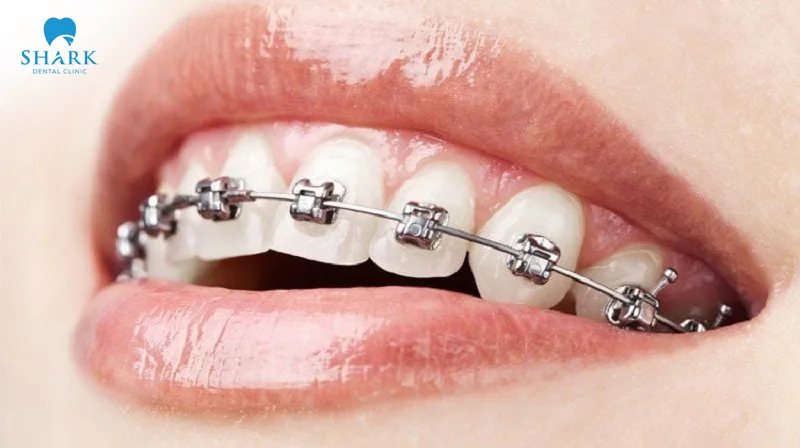
How metal braces work
Currently, metal braces are composed of the following components:
- Bracket base: A rough surface with grooves designed to enhance the retention of the bracket when attached to the tooth surface.
- Bracket wings: These consist of four wings on the bracket base, serving as attachment points for elastic ligatures or metal ties to secure the archwire into the slot of traditional metal brackets. In self-ligating metal brackets, these wings are replaced or complemented by built-in sliding clips that open and close automatically to hold the archwire in place.
- Bracket slot: This is the part located between the wings of the bracket and is considered a crucial area where the archwire is inserted. It plays a key role in delivering orthodontic force to the teeth. Depending on the bracket system, the slot may vary in size, which affects how much force is applied to the teeth.
- Archwire: This is an essential orthodontic component that plays a vital role in moving the teeth during treatment. Depending on its shape, size, and material, the archwire can be selected to suit different stages and types of orthodontic correction.
Orthodontic appliances work together to generate forces that help move the teeth into proper alignment. The specialist will determine the appropriate level of force to ensure effective tooth movement while minimizing any potential negative effects.
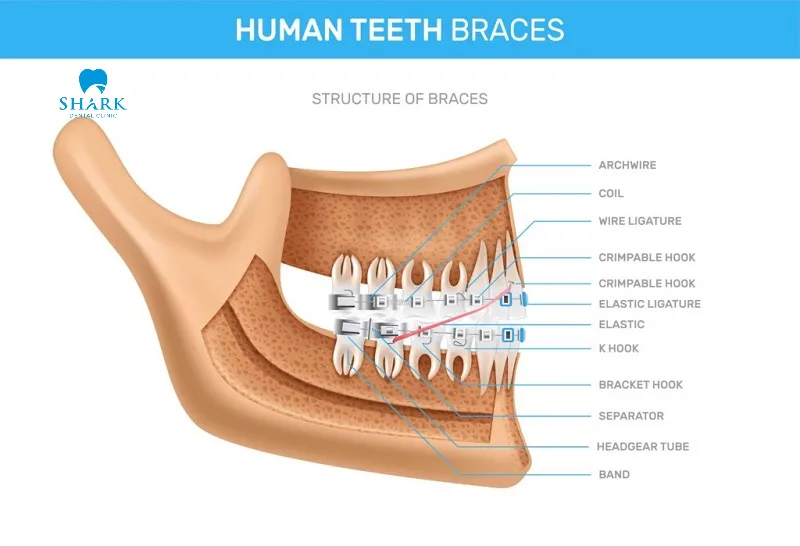
Types of metal braces
Metal braces are divided into several types, each with its own structural characteristics and effectiveness.
Traditional metal braces
Traditional metal braces include components such as brackets, archwires, and elastic bands that work together to secure and move the teeth. The elasticity of the rubber bands helps shift the teeth into balanced positions, align the bite, and ensure proper chewing function.
This method has aesthetic limitations and often encounters issues such as stretched elastics, detached brackets, and difficulties in both oral hygiene and daily activities.
Self-Ligating metal braces
This method has a similar structure to traditional braces, but instead of using elastic bands, self-ligating braces utilize built-in clips to hold the archwire more securely in place. This helps overcome limitations related to elasticity, breakage, and discomfort caused by elastic ties.

Lingual braces
Lingual braces, also known as behind-the-teeth braces or a form of invisible braces, use traditional brackets and wires but are placed on the inside surfaces of the teeth, facing the tongue. This method offers high aesthetic value since the braces are hidden from view. However, it can be uncomfortable during eating and may cause irritation or injury to the tongue.
Compare metal braces with other types of braces
Metal braces are considered a traditional orthodontic method and differ significantly from ceramic braces and clear aligners. Clear aligners are a popular form of removable braces. To make an informed decision about which option suits your needs best, you can refer to a comparison chart between metal braces, ceramic braces, and clear aligners.
| Criteria | Metal Braces | Ceramic braces | Clear Aligners |
| Structure | Fixed archwires in the bracket slot using elastic ligatures, creating steady forces to move the teeth. | Uses a self-ligating system with built-in clips in the brackets, allowing the archwire to slide within the slot. | Uses a system of specially designed clear aligners that fit directly onto the teeth. |
| Aesthetics | Lower aesthetic appeal due to visible wires and brackets when speaking. | More aesthetic than traditional metal brackets thanks to the small, sleek self-ligating clips. | Highest aesthetic appeal as the clear aligners are nearly invisible and do not show signs of orthodontic treatment. |
| Effectiveness of Braces | High effectiveness thanks to fixed tightening force, teeth can be improved in many defected areas. | Relatively high effectiveness, ensures teeth shift to a balanced position. | Lower effectiveness than traditional metal and ceramic braces, as aligners have limited orthodontic impact. Suitable for mild cases. |
| Safety | May cause damage to teeth and gums due to metal bracket design. Also prone to bracket detachment. | Relatively safe due to the self-ligating system and internal sliding archwire, minimizing detachment. | High safety due to specialized aligner design, easy to insert/remove and user-friendly. |
| Cost | Lowest cost compared to current orthodontic methods. | Relatively high cost, higher than regular metal braces. | Highest cost among all orthodontic methods due to high aesthetics, safety, better alignment, and ease of removal and cleaning. |
How much do metal braces cost in Vietnam?
The cost of metal braces is a topic many people are concerned about. The price of traditional metal braces in Vietnam typically ranges from $2,500 to $3,000. The actual cost may vary depending on the cosmetic dental clinic, quality of service, and the condition of your teeth before treatment.
The cost of braces may vary depending on several different factors. The most important thing is that customers should choose reputable clinics that use modern dental techniques in order to achieve the desired orthodontic results.
>>> Read more: How much do braces cost in Vietnam?
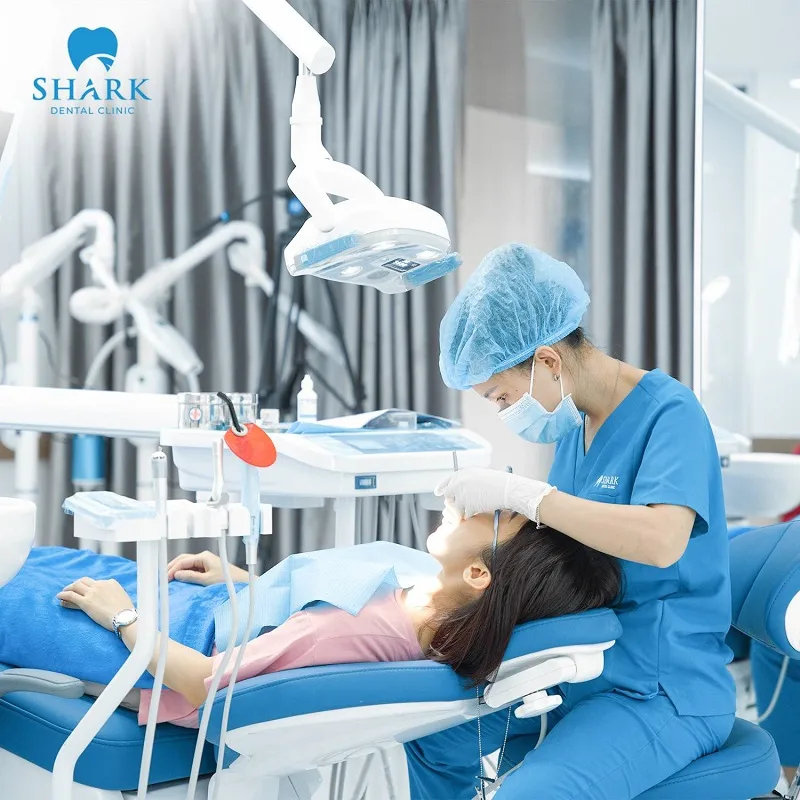
How to care after braces
Taking care of your oral hygiene after getting braces is considered crucial to support the effectiveness of orthodontic treatment and prevent signs of infection or complications:
- Use a specialized toothbrush designed for people with braces to clean your teeth properly. Choosing the best toothbrush for braces is essential to ensure a thorough clean. Brush gently to avoid putting pressure on the braces and minimize any impact on the orthodontic appliances.
- Choose a toothpaste that contains fluoride, a mineral essential for the remineralization of enamel and dentin. Its main function is to strengthen tooth enamel and help prevent infections and tooth decay.
- Brush your teeth at least twice a day using a circular motion. When brushing around the brackets, position the toothbrush at the gum line and gently push the brush above and below the brackets to thoroughly clean the area, removing bacteria, plaque, and preventing signs of inflammation.
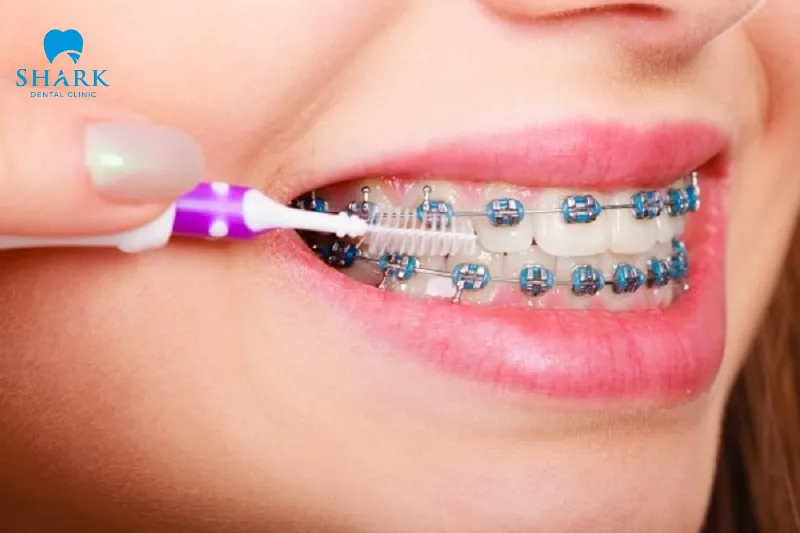
- Use dental floss to clean between the teeth and remove any remaining food particles and plaque. Understanding how to floss with braces effectively is vital to prevent plaque buildup around the wires and brackets.
- Rinse your mouth with salt water to eliminate bacteria and keep your breath fresh and pleasant.
- Have your teeth professionally cleaned (tartar removal) regularly to prevent the development of conditions such as gingivitis and periodontitis.
- Eat soft foods for braces and avoid chewing on hard or sticky items, as they may cause brackets to become loose or dislodged.
- Cut food into small pieces to make digestion easier and reduce excessive chewing force, which can cause discomfort.
- Avoid eating hard, chewy, or sticky foods as they can affect the brackets attached to your teeth.
- Visit your dentist regularly for check-ups to detect any oral issues early and receive timely, effective treatment.
It can be seen that metal braces are one of the most commonly chosen orthodontic methods due to their high effectiveness, affordable cost, and wide applicability to various dental conditions. However, traditional metal braces still come with certain limitations. Hopefully, through this article, customers will gain a better understanding of this method and make informed decisions when choosing the most suitable orthodontic treatment.





